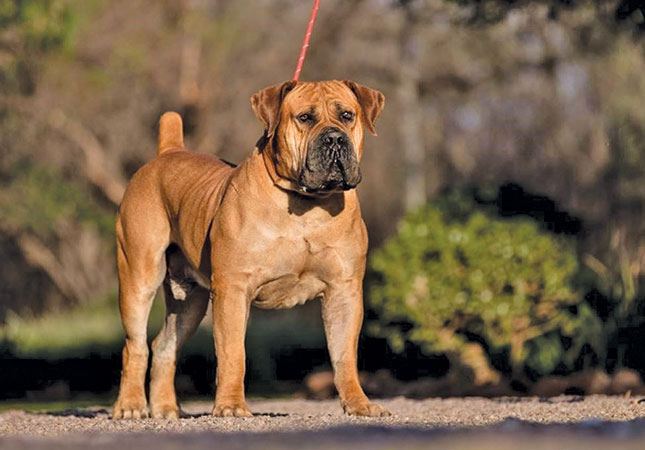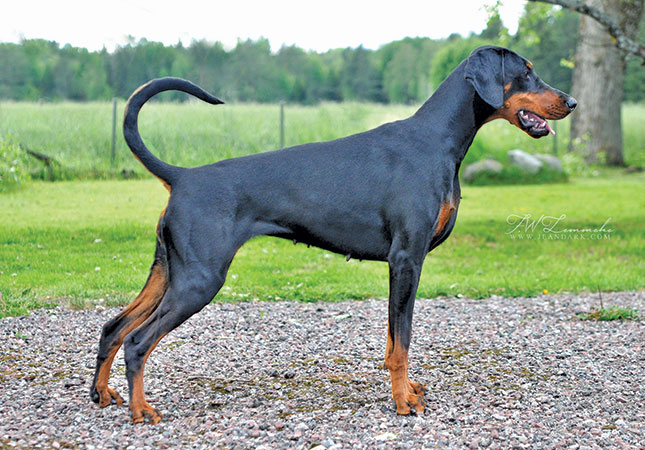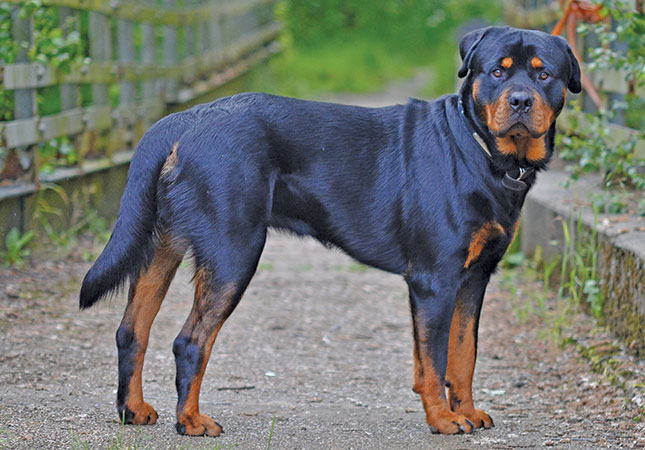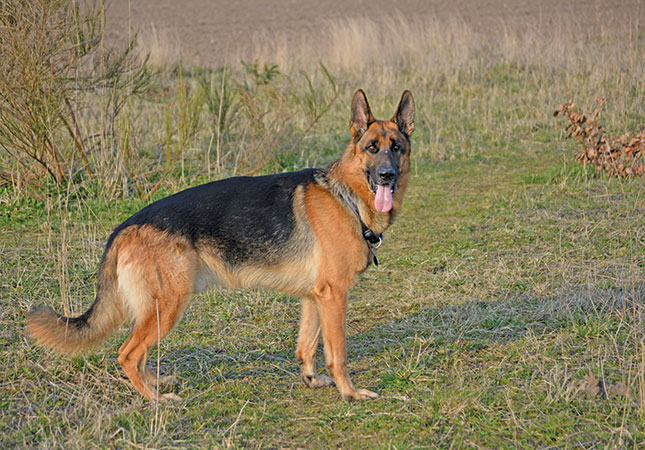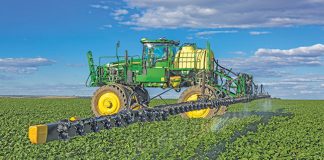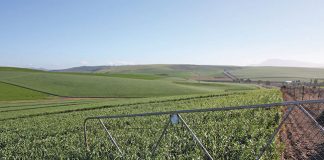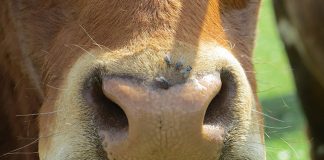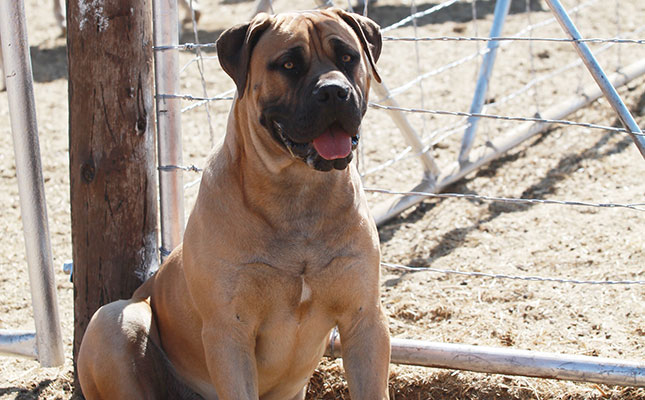
Whatever your preference, a large-breed guard dog isn’t only bred to protect its owners and property; its size, deep bark and intimidating appearance can also help to deter intruders.
The American Kennel Club uses a scale of one to five to describe the levels of aggression, maintenance and appropriateness for families of various dog breeds. These traits are important for farmers who have young children, or those who often have visitors. The scale works as follows:
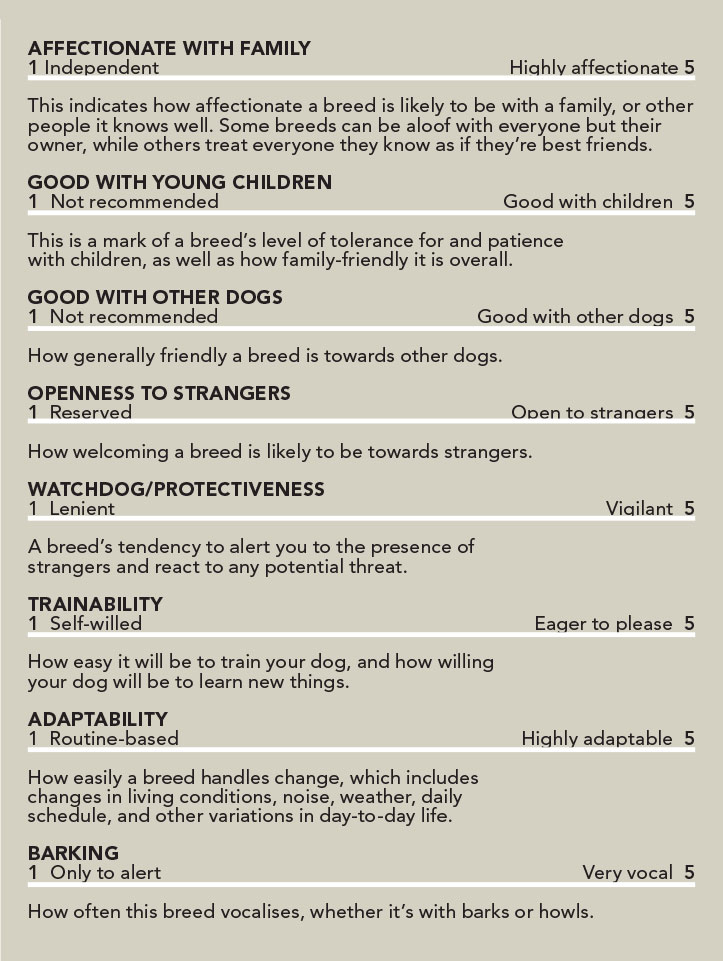
Boerboel
Height: 61-70cm (male); 56-64cm (female)
Weight: 68-91kg
Life expectancy: nine to 11 years
American Kennel Club scale:
- Affectionate with family: 5
- Good with young children: 4
- Good with other dogs: 2
- Openness to strangers: 3
- Watchdog/protectiveness: 5
- Trainability: 4
- Adaptability: 3
- Barking: 3
According to Anemarí Pretorius, former chairperson of the South African Boerboel Breeders’ Society, the Boerboel is a true South African breed of dog. “Historically, the Boerboel served as a farm dog, and today, this strong working breed is well-known and popular as a guard dog and loyal family companion.
“It is intelligent, calm and confident, is good with children, and gets along well with other pets. However, because it is a dominant breed of dog, it does require firm and structured training,” she says.
“The Boerboel is exceptionally suitable for the protection of homes, properties and people. This is what they were bred for. This dog has strong protective instincts, and its size alone is often enough to deter people. It has a willingness to please, will fit into your lifestyle, and will defend you with its life.
“It is a good all-purpose dog that will provide its owner with security and lots of love,” explains Pretorius.
“Some people perceive the Boerboel as aggressive. However, if it is well-trained and socialised, this dog will display a clam and mellow temperament around children and other family members. A Boerboel will defend its family, and although it is likely to be aloof around people it is unfamiliar with, it will not be aggressive towards them if properly trained from puppyhood.”
Bullmastiff
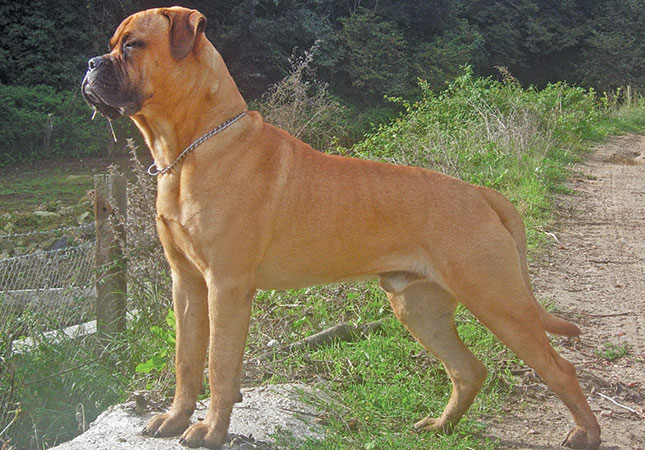
Height: 64-69cm (male); 61-66cm (female)
Weight: 50-59kg (male); 41-54kg (female)
Life expectancy: seven to nine years
American Kennel Club scale:
- Affectionate with family: 4
- Good with young children: 3
- Good with other dogs: 3
- Openness to strangers: 3
- Watchdog/protectiveness: 5
- Adaptability: 3
- Trainability: 4
- Barking: 1
The bullmastiff is a British dog breed that was developed following the repeated and selected breeding of an English mastiff and bulldog.
It was initially bred as a companion for gamekeepers and protecting livestock against poachers. They are innately suited to performing their function as guard dogs, particularly on smallholdings or farms. They are also known to be good at performing scent work and tracking.
Veterinarians.org lists the bullmastiff as the world’s best family guard dog, describing the breed as loyal and courageous. Its intimidating appearance is also off-putting to would-be intruders.
The breed was developed to apprehend, rather than bite. “It was perfect for intimidating would-be intruders and bravely pursuing trespassing poachers and pinning them down without mauling them,” says Veterinarians.org writer Katelyn Son.
Bullmastiffs have large, broad heads; dark eyes, high-set V-shaped ears; and broad, deep muzzles. They have short backs, giving them a compact look; deep chests; and sloping, muscular shoulders.
These dogs are intelligent, alert, agile and confident. They have short and smooth coats, which means that shedding is minimal, and they only need to be groomed once a month. Generally, they require only moderate exercise.
While a bullmastiff is an exceptional guard dog and affectionate to its family, training is essential during puppyhood, as this breed is headstrong and requires obedience training.
According to Son: “Bullmastiffs require strong and consistent training while they are young puppies in order to ensure that they grow into safe and obedient adults.
“Bullmastiff puppies are strong-willed and independent thinkers. It’s important for them to have a strong owner who can help them grow into [obedient] adult dogs.”
She adds that bullmastiffs are not ideal for first-time dog owners, as experienced handlers are more likely to effectively train the dog.
Moreover, the boisterous and lively behaviour of bullmastiff puppies make them more challenging to train.
Doberman Pinscher
Height: 66-71cm (male); 61-66 inches (female)
Weight: 40kg to 45kg (male); 32kg to 35kg (female)
Life expectancy: 10 to 12 years
American Kennel Club scale:
- Affectionate with family: 5
- Good with young children: 5
- Good with other dogs: 3
- Openness to strangers: 4
- Watchdog/protectiveness: 5
- Trainability: 5
- Adaptability: 4
- Barking: 3
The Doberman Pinscher is a German dog breed that was developed in the late 1880s by tax collector Louis Dobermann. As his was a dangerous job, Dobermann went about crossbreeding various dog breeds to develop the ideal protection dog.
While it is uncertain which breeds were originally used in the development of the Doberman, some believe the foundation breeds included the Beauceron, German Pinscher, Rottweiler and Weimaraner.
The Doberman is a large-breed dog, and is sleek, powerful, and highly intelligent. It also aims to please, and this, in combination with its intelligence, makes it easy to train.
Dobermans are also known as ideal guard dogs as they are fearless and vigilant, and their size and appearance act as deterrents to intruders. The breed is also fast and agile, and its short, smooth coat make it a low-maintenance breed in terms of grooming.
As this breed is athletic and energetic, it does well on smallholdings and farms, where there is plenty of space for it to run. It can also be trained as a work dog. However, as with other large breeds, the Doberman needs behaviour training and socialising from an early age.
Without a firm and consistent owner, this breed may become pushy or destructive. Due to its large size, it may also become unmanageable if not properly trained.
The Doberman is loyal, affectionate and needs lots of attention, and it may suffer from depression or separation anxiety if left alone for too long. It is also very vigilant and will respond to suspicious activity.
Dr Virginia LaMon writes on the PetMD website that Dobermans have a strong prey drive. “[As such], they may not be the ideal pet for families with other small animals in the home, such as guinea pigs, rabbits, or cats.”
She adds: “The Doberman is extremely intelligent and thrives in obedience and basic dog training. It loves to have an outlet for all its energy, so providing a consistent training and socialisation routine early in life is a great way to encourage good behaviour and redirect undesired behaviours. Without training, Dobermans can become unmanageable and reactive to novel stimuli (such as strangers, new sounds, and new objects).”
Rottweiler
Height: 61-69cm (male); 56-64cm (female
Weight: 43-61kg (male); 36-45kg (female)
Life expectancy: nine to 10 years
American Kennel Club scale:
- Affectionate with family: 5
- Good with young children: 3
- Good with other dogs: 3
- Openness to strangers: 3
- Watchdog/protectiveness: 5
- Trainability: 5
- Adaptability: 4
- Barking: 1
The Rottweiler’s intimidating appearance may make it seem like the ideal guard dog, but one that isn’t suited to families with children. However, they actually make wonderful family dogs that are exceptionally patient with young children.
Julie Fritz, author for the Canine Journal website, says rottweilers are affectionate towards and loyal to their families, and they are particularly social dogs that need to be part of the family.
The breed was first documented in Germany in the late nineteeth century. They were working dogs, used to herd livestock and pull carts of butchered meat to the market.
Due to their intelligence, athleticism and strength, Rottweilers are versatile and can perform a wide variety of tasks, including security and herding.
Rottweilers are largely calm and confident, and often adopt a ‘wait-and-see’ approach to unfamiliar situations. Thus, they tend to first assess a situation before acting, which makes them particularly valuable on smallholdings and farms, where visitors may be often present.
Despite their reputation for being aggressive, they are not unduly so. However, they need good training and early socialisation from a firm owner. They are extremely stubborn, which makes them difficult to handle by someone unfamiliar with the breed or larger dog breeds. They are highly trainable and quick learners. Without adequate training, they can become destructive.
German shepherd
Height: 61-66cm (male); 56-61cm (female)
Weight: 29-41kg (male); 23-32kg (female)
Life expectancy: seven to 10 years
American Kennel Club scale:
- Affectionate with family: 5
- Good with young children: 5
- Good with other dogs: 3
- Openness to strangers: 3
- Watchdog/protectiveness: 5
- Trainability: 5
- Adaptability: 5
- Barking: 3
The German Shepherd is perhaps one of the most well-known dog breeds in the world, and is renowned for its intelligence. They are very pack-orientated animals and make exceptional pets for families with young children.
From around 1899, the breed was developed by Max von Stephanitz through the crossbreeding of various German herding dogs. It was thus initially bred for herding, and displayed the skills needed to be an exceptional herding dog, including speed, strength and a keen sense of smell.
German Shepherds are hard-working, loyal dogs. They are athletic, courageous and energetic, and are known for being protective of their families and their owners’ properties.
Due to their intelligence and eagerness to please, they are easy to train. They are also vigilant and wary of strangers, and will alert their owners to any suspicious activity.
As with other intelligent breeds, a German Shepherd may become destructive when bored or left alone for too long. It is somewhat vocal, but its deep and loud bark will act as a deterrent to intruders.
“Due to their high levels of energy and athleticism, they are ideal for farms and smallholdings. They can also be trained as working dogs for herding sheep, and so on.
Dr Barri Morrison, who writes for PetMD, says: “[German Shepherds] are gentle, family dogs and loyal protectors of those they trust. This loyalty can make them seem standoffish around strangers. It does take them some time to gain the trust of other people and pets.”
She adds: “German Shepherds’ temperaments may vary according to their backgrounds. Dogs from working lines have extremely strong work drives and may be more than most people can or want to handle.
“If you want a family companion, a dog from a ‘conformation breeder’, someone who seeks to breed dogs that conform most closely to the German Shepherd ideal, may be a better choice.”
Sources: Animal Insider; Fenrir Dog Show; American Kennel Club.

